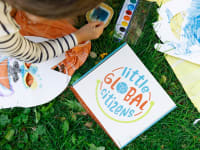Are these kids' science kits as fun as they look online?
We tried KiwiCo's STEM-inspired DIY kits to find out.

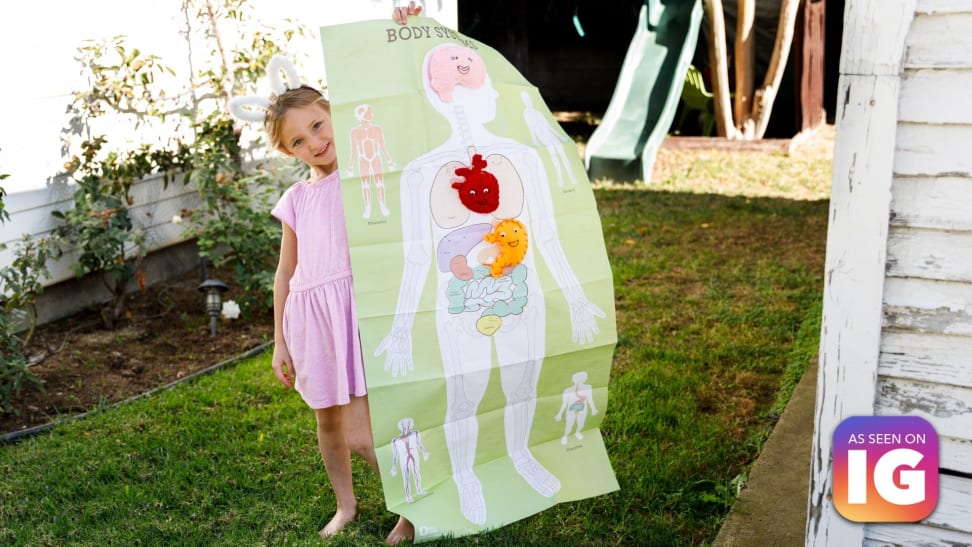 Credit:
Lisa Lawrence / Naidin Concul-Ticas
Credit:
Lisa Lawrence / Naidin Concul-Ticas
Products are chosen independently by our editors. Purchases made through our links may earn us a commission.
If you have kids and you’ve scrolled the ‘gram in the last few years, you’ve likely been targeted with ads from KiwiCo. The monthly subscription service delivers hands-on science and craft projects for all ages. Their ads—and Instagram feed—make the activities look lots of fun as well as educational.
I’ve been meaning to sign up my kids, ages 8 and 9, for a KiwiCo subscription for at least two years but never managed to make it that far down my to-do list. When the company reached out and offered to send me—okay, my kids—a few of the crates to test out, I jumped at the chance. I figured it was a great opportunity to see just how much fun a Kiwi Crate delivers.
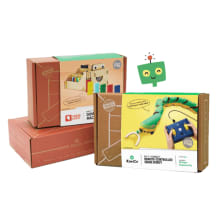
We loved completing KiwiCo's enriching science and art projects as a family.
What is KiwiCo?

KiwCo Crates are suitable for all ages.
KiwiCo sells STEAM-based projects (that is, science, technology, engineering, arts and mathematics) to help kids develop hands-on skills and learn about new topics. These fun, educational boxes come with all the supplies you'll need to tackle each project, along with step-by-step instructions with pictures. Kids (and parents) can also access plenty of video tutorials on the KiwiCo site in case they get stuck or just need a little inspiration.
KiwiCo's crates are differentiated by age range with cute names. The projects within are based on children's fine motor skills and interests:
-
Panda Crate: For exploration and early childhood development (Ages 0-3)
- Koala: For discovery and hands-on learning (Ages 3-4)
- Kiwi: For innovation and imaginative play (Ages 5-8)
- Atlas: For geography and cultural awareness (Ages 6-11)
- Yummy: For kitchen and cooking skills (Ages 6-14)
- Tinker: For problem solving and learning STEM principles (Ages 9-14)
-
Doodle: For crafts and creativity (Ages 9-16)
- Eureka: For engineering and design (Ages 12-100)
- Maker: For art and design (Ages 14-100)
How does KiwiCo work?
KiwoCo offers individual crates from its online store, or you can sign up for its subscription-based service. Subscribers can opt for a monthly subscription in which you're charged as each shipment is sent, or you may prepay for three months, six months, or 12 months, respectively, for a lower cost per box at each longer term of commitment. Your subscription will automatically renew at the end of your term unless you cancel, which you can do easily by logging into your account and selecting “cancel my subscription.”
What’s in a Kiwi Crate?
My kids tried several “Kiwi Crates,” designed for ages 5 to 8. In addition, Rachel Murphy, Reviewed's Smart Home editor, put her 16-month-old to work testing the toddler-appropriate “Panda Crate”. Inside, we found all the materials needed for the project, along with a step-by-step instruction booklet, and a copy of “explore!” magazine, which has comics, games, and other suggestions for ways to extend the fun and learning with your project.
How much does a Kiwi Crate cost?
The cost for a KiwiCo subscription depends on two factors: which crate you select, and whether you sign-up for a monthly membership or one of the multi-month packages—the boxes get cheaper the longer you opt-in for. Monthly subscriptions are $23.95 per month for most lines (Koala Crate, Kiwi Crate, Atlas Crate, Yummy Crate, Tinker Crate, Doodle Crate), while the Maker Crate and Eureka Crate are $32.95 per month, and the Panda Crate is $43.90 per crate (shipped every 2 months). Shipping is free addresses in the U.S.
As mentioned, KiwiCo's online store carries one-off boxes, but these cost more than one would pay with a subscription. Prices here generally vary between $27.95 to $39.95 for a standard crate.
What are KiwiCo boxes like in real life?
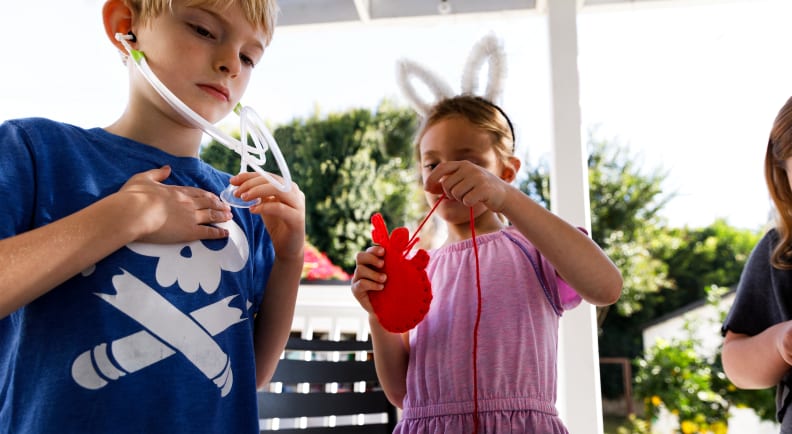
The projects in our Kiwi Crate were both fun and educational.
One of the first things I noticed and appreciated about KiwiCo is that the crates aren’t shipped inside another larger packing box, which would create recycling for both me and the earth to contend with. The self-contained crates clearly state what’s inside and are addressed to the child recipient—which could be problematic if you’re trying to keep a gift secret—but my kids loved seeing their names printed right on the box and were excited to “test out” their Kiwi Crates.
Despite a journey through the mail, our Kiwi Crates looked orderly when we opened them up. All of the pieces for the projects were contained in separate small bags, with the directions and “explore!” magazine nestled on top.
The first Kiwi Crate we tried was the "My Body and Me" crate, which included three different activities, all focused around kids learning about what goes on inside their bodies. The projects:
- Making our own stethoscope using rubber tubing, a plastic headband, and earbuds—and then listening to each other’s hearts
- Sewing stuffies of the heart, brain, and lungs and then attaching them to a hang-up map of the human body
- Creating our own “X-rays” using images of bones and light paper
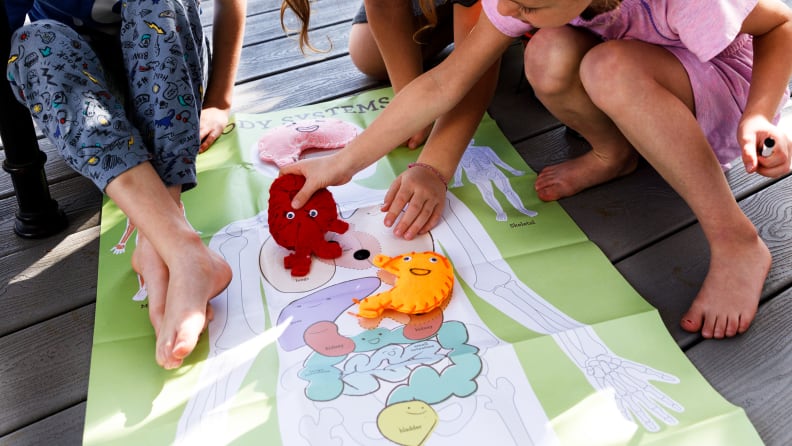
The My Body and Me crate provided lots of fun for both of my kids.
All in all, it took about an hour and a half to complete all of the activities in the crate, and it was a great way to pass the time on a day when the kids didn’t have school and were “bored.” The multiple steps offered plenty to keep both of them busy (without any squabbling), and my daughter continued to decorate the organ stuffies long after my soh had tired of the activity.
Our second foray into Kiwi Crate testing had us making "The Arcade Claw," which is a DIY version of the classic arcade game that takes your money and never (ever) picks up any stuffed animals. This Kiwi Crate contained three projects for us to complete:
- Building the Claw out of wood pieces and rubber bands
- Crafting pom-pom “prizes” out of yarn
- Turning our Kiwi Crate box into the game console
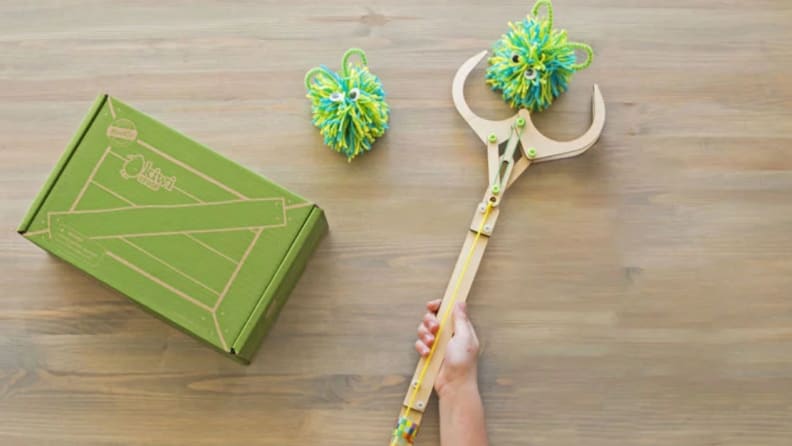
The Arcade Claw provided lots of entertainment even after we finished the Kiwi Crate.
The Claw was the more difficult of the two crates that we tried, requiring more parental assistance overall. The kids found it challenging to figure out the angle and position for each of the wooden pieces and I had to cut the box with an Xact-o knife in order to create the game console. However, this Kiwi Crate provided lots of entertainment long after we were done putting it together and had played a few rounds of The Claw game. While the game console and pom-poms lost their excitement after a few days, the Claw itself showed up all the time in other forms of play.
The Panda Crate that Rachel tested, billed as the "Count with Me" crate, included a selection of sensory toys aimed at kids ages 11 to 18 months. The items that arrived in the Panda Crate:
- 10 counting cards, each with a touch/feel element to it
- “Poppy’s Surprise” board book about counting to 10
- Reversible canvas nesting baskets to practice sorting by size, putting things in order, and making comparisons
- Stacking cups, numbered from 1 to 10
- Cylinder blocks made from beechwood
- Wooden shape puzzles (a circle, a square, and a triangle)
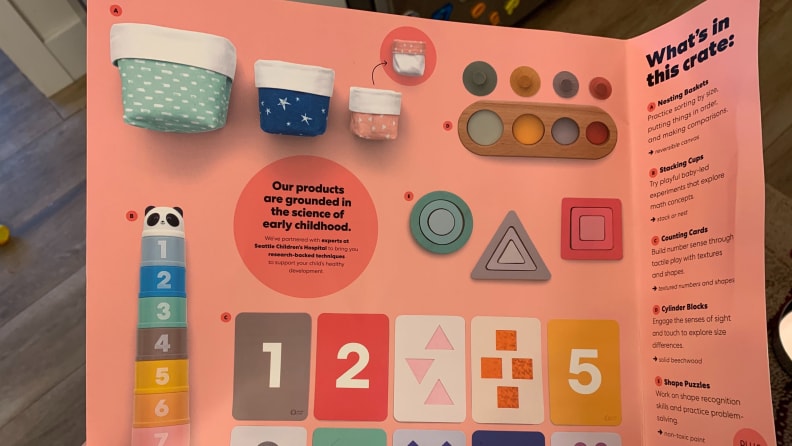
The "count with me" Panda Crate is designed for babies ranging in age from 11-18 months.
Rachel felt that the age range was too broad in the Panda Crate—there’s a big jump in small motor skills and cognition between 11 and 18 months—but she liked that it had a nice mix of essential toys that weren’t plastic junk. Each toy comes with a card that explains the product, its purpose, how to use it, and how to clean it. In addition, each Panda Crate contains a brief educational booklet—this one was about building math sense, to tie in with the counting-to-10 theme.
Can kids do Kiwi Crates without help?
For the most part, my kids were able to execute the projects on their own, though they did need me to help them with the more complicated aspects. Kids who can't read yet may need parental assistance with directions, but older kids will easily be able to execute the projects without much (if any) adult assistance.
But to be honest, I enjoyed helping my kids with their Kiwi Crates. If you’re not a “Pinterest Mom” (and I am decidedly not) but you still want to do crafty projects with your kids, a KiwiCo monthly subscription box is a great option. You don’t have to waste time figuring out a project to do, then wandering the aisles of your local craft store and shelling out a bunch of money for something that’s likely to end up being a “Pinterest Fail.” KiwiCo’s projects are pretty foolproof and more fun than the usual run-of-the-mill crafts. And while you could perhaps buy the “ingredients” for less money on your own, the out-of-the-ordinary projects and quality of the kits themselves are of great value.
If you prefer projects that your kids can do all by themselves so that you can drink hot coffee in peace, I would suggest not ordering KiwiCo until your kids can read well and are interested in doing projects independently.
Should you sign up for KiwiCo?

KiwiCo succeeds at sparking creativity in kids and instilling problem-solving skills.
If you’re anything like me, the answer is a resounding “yes.” There’s something to be said for having a KiwiCo crate on hand every month, especially as we move into the snowed-in, Arctic Blast season of the year. I loved being able to grab one of the Kiwi Crates I had stashed on a shelf to banish the “we have nothing to do” whines, and they’re a far more creative—and educational—activity than playing on an iPad.
If you’re still hesitant to sign your child up for a KiwiCo subscription, might I suggest asking for one as a gift? It’s a great present from a grandparent or other family member, especially if you’re a parent who is trying to cut back on all the “stuff” around your home (ahem, me). Your kid will be far more pleased with a monthly activity designed just for them than yet another ugly sweater from Aunt Ruth.


